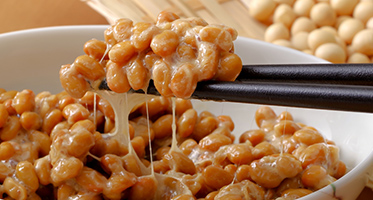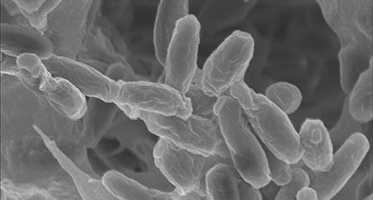
Nattokinase
Bacillus Subtilis Natto
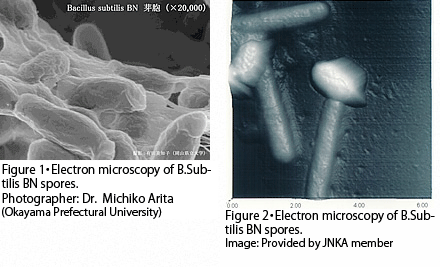
Bacillus Subtilis Natto (Figure 1 and Figure 2) was discovered by Dr. Tadashi Sawamura in 1906, and named it as ‘‘Bacillus natto Sawamura’’.
Bacillus Subtilis Natto is the bacterium that produces salt-free fermented soybean foods such as the ancient Japanese natto, Nepalese Kinema, and Thai Thuanao. In the strict sense of the word, it is not an endogenous bacterium in the intestines, but one of the Bacillus subtilis, the most stable bacterium in nature with endogenous spores. Bacillus subtilis natto becomes active in the intestines, and enhances and stabilizes the beneficial flora (lactic acid bacteria, bifidobacteria, etc.) that each animal naturally possesses through various physiological effects. As a result, harmful bacteria such as pathogens and rotting fungi are naturally eliminated. It is also known to have strong antibacterial activity, producing antimicrobial substances such as Bacilipin and Subtilin. In recent years, Bacillus subtilis natto has also been reported to have anti-cancer and immune function enhancing effects.
Function of Bacillus Subtilis Natto
-
Growth of useful bacteria such as lactic acid bacteria
-
Inhibit intestinal harmful bacteria
-
Balances the intestinal microflora by the above two functions.
-
Produces potent proteolytic and starch-degrading enzymes.
-
Synthesize rich in B vitamins.
Experimental Report by Bacillus Subtilis Natto
Bacillus subtilis natto can endure harsh environments by changing its cells into a stage called ''spores''. Therefore, it is said to be more resistant to pressure and acid than lactic acid bacteria and bifidobacteria.
Viability of Bacillus Subtilis Natto Spore Solution Treated with Acidic Solution
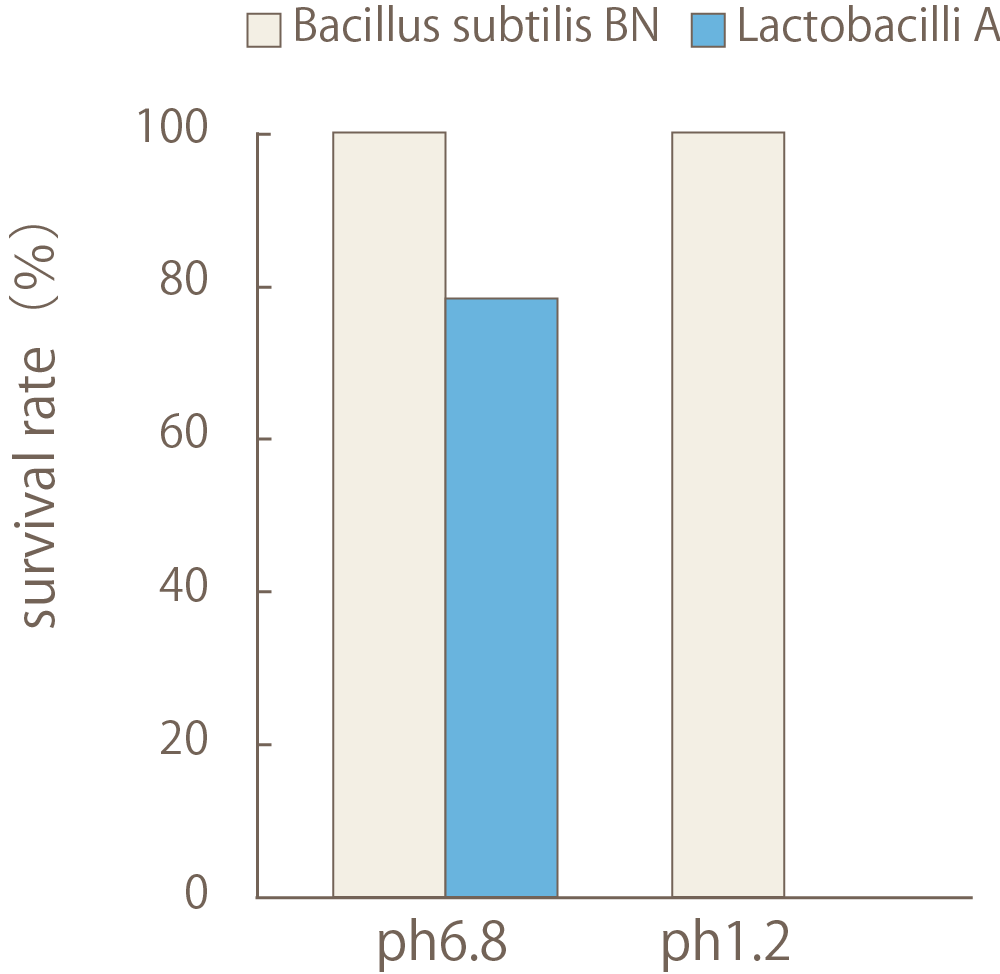
The survival rates after 6 hours of retention in solutions of pH 6.8 and pH 1.2 were compared with lactobacilli A.
Under pH 6.8, which is close to neutrality, almost 100% of Bacillus subtilis BN (spores) survived, whereas about 80% of lactobacilli A survived.
Under the condition of pH 1.2, which is close to stomach acid, Bacillus subtilis BN (spores) survived almost 100%, but lactobacilli A were killed.
Thus, since Bacillus subtilis natto can withstands stomach acid, it is expected to reach the intestines as alive.
Source: Evaluation of probiotic and prebiotic-like effects of Bacillus subtilis BN on growth of lactobacilli J. Gen. Appl. Microbiol., 64, 26–33 (2018). Chart has been corrected.
Effect of the growth on lactic acid bacteria
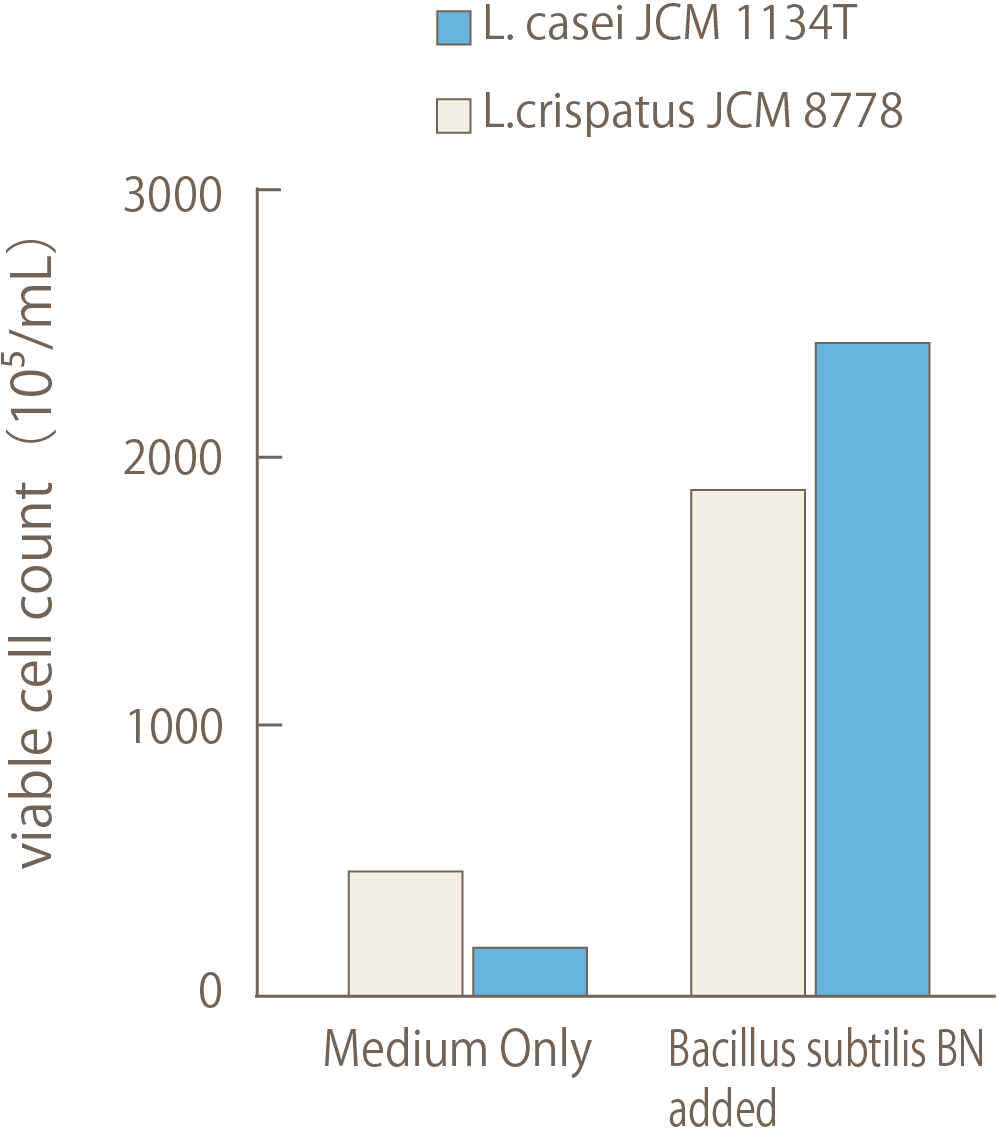
This study examined the effect of Bacillus subtilis natto on the proliferation of lactic acid bacteria.
It was confirmed that when lactic acid bacteria were cultured in a medium containing starch instead of sugar (glucose), the presence of bacillus subtilis natto promoted the growth of lactic acid bacteria. It is thought that Bacillus subtilis natto produces sugars from starch that can be used by lactic acid bacteria. Bacillus subtilis natto is expected to help increase the number of lactic acid bacteria, which are good bacteria in the intestines.
Source:Evaluation of probiotic and prebiotic-like effects of Bacillus subtilis BN on growth of lactobacilli J. Gen. Appl. Microbiol., 64, 26–33 (2018). Chart has been corrected.

